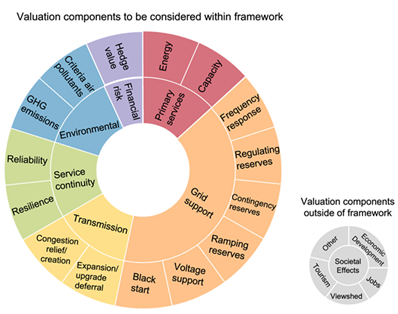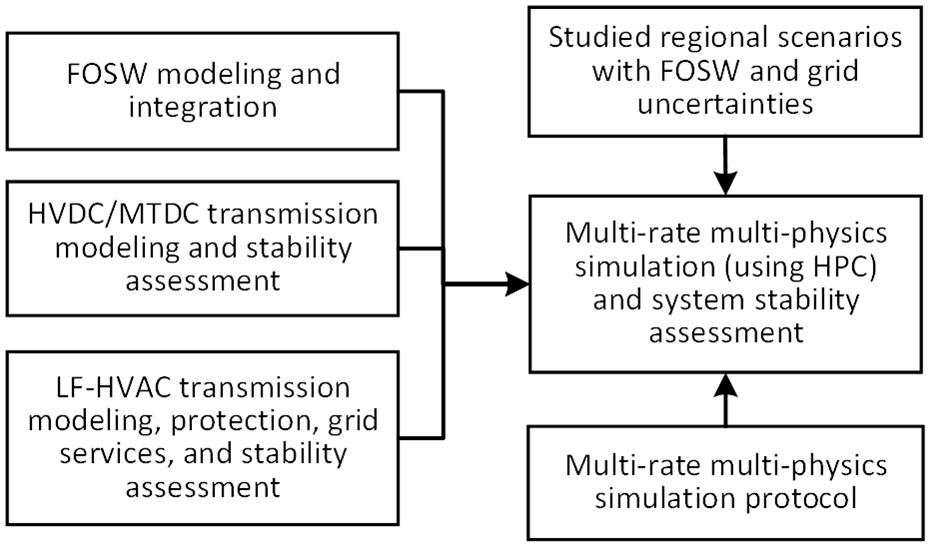Grid Theme
Shrirang Abhyankar, Co-Lead, and Travis Douville, Co-Lead
Goal: The goal of this work is to determine optimal system designs for the economical and reliable operation of the grid and efficient transport of power from offshore floating wind turbines in the present and future climates.
Once energy is generated by floating offshore wind turbines, it must be incorporated into the grid to be used. This integration introduces a set of complex challenges, across time scales that span seconds to decades. Decisions about wind power plant output, onshore transmission capacities, and storage co-siting must all be considered when designing integration infrastructure. Additional considerations extend beyond the point of interconnection and include impacts of offshore wind power injections to grid frequency and voltage, under a range of operating conditions. This theme will explore how to best integrate energy generated from floating offshore wind farms into the grid, incorporating both long- and short-term planning.

Long-Term Planning Decisions
Work in this task will focus on optimizing decisions made for deploying floating offshore wind thinking about longer time scales (years to decades). Developed models will center around decisions that affect intersections between the offshore wind farm and grid infrastructure and the eventual emergence of offshore grids. Planning tools can help determine which option in a set of possible points of interconnection is best for both the grid and a farm location, analyze energy production costs at a system scale, and find maximum value for coastal communities and power users. This work will facilitate effective planning for the development of offshore wind energy deployment.

Short-Term and Seasonal-to-Subseasonal Time Scale Decisions
The short-term time scale is essential for maintaining functional grid operation. The electric power that can be derived from floating offshore wind is highly variable, with significant uncertainty related to environmental conditions. This work centers on developing models to help efficiently manage grid planning and operation from the sub-hour to subseasonal time scales given the challenges and changing nature of the wind resource. The team will develop models to help us understand the economic, reliability, and resilience benefits of incorporating the uncertainty inherent in floating offshore wind generation into grid planning and operation.

Real-Time and Stability Decisions
Overall system stability includes the very short-term time scale, relevant to real-time modeling and operation. Investigating how interactions between controllers, offshore transmission structures, and power electronics affect system stability forms the focus of this work. Modeling will be conducted at regional scales to make sure that the system size is sufficient to draw meaningful conclusions. In particular, this work will leverage PNNL’s GridPACK tool, an open-source high-performance grid simulator.

Multirate Dynamics Algorithms
Simulating complex grid processes and how they intersect with metocean conditions requires significant computational power. This task will focus specifically on the fundamental mathematical and computational challenges involved throughout the Grid Theme. Using emerging approaches that incorporate both fast and slow dynamics representations and integrates them, the team will employ new scalable multirate methods to describe power grid applications. Additionally, leveraging scientific machine learning techniques, we aim to enhance the predictive capabilities and efficiency of our simulations, making them more adaptable to real-world variability and uncertainties in grid behavior.
